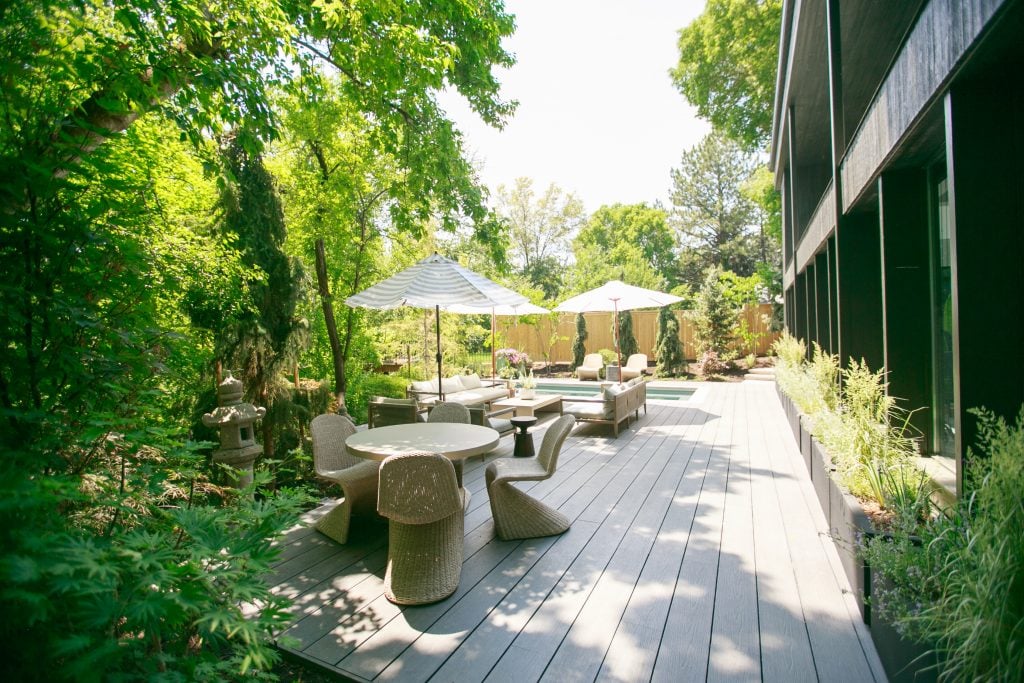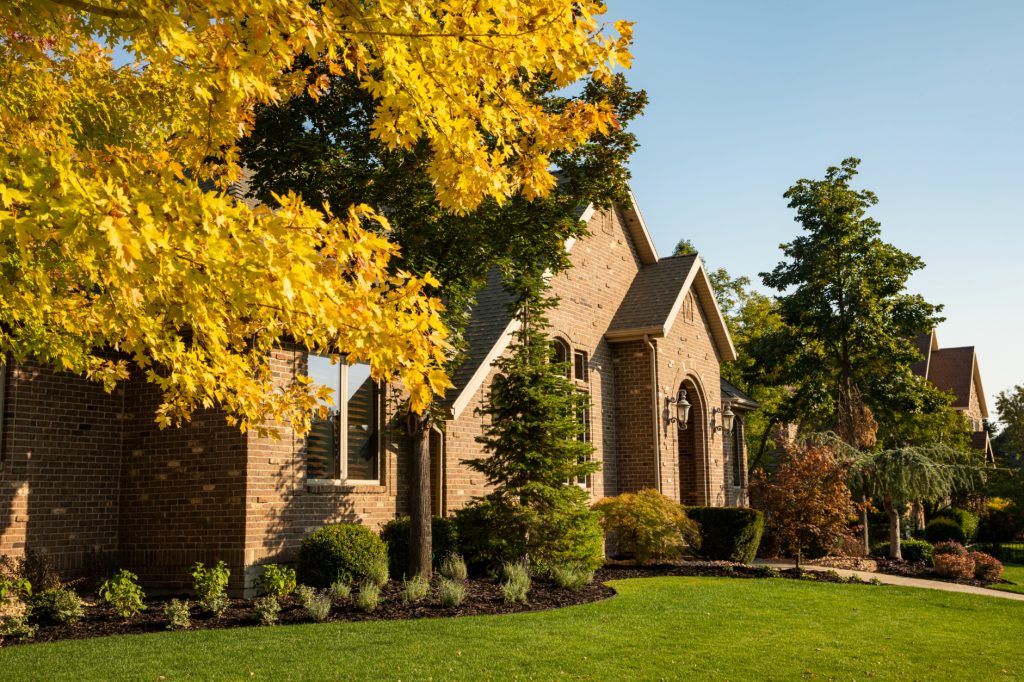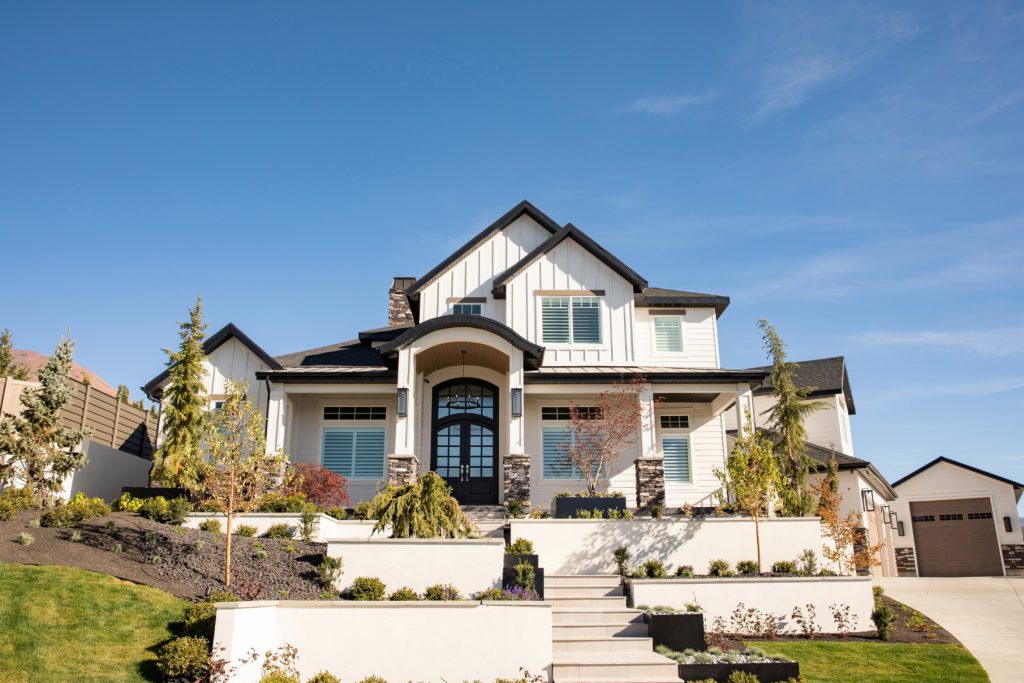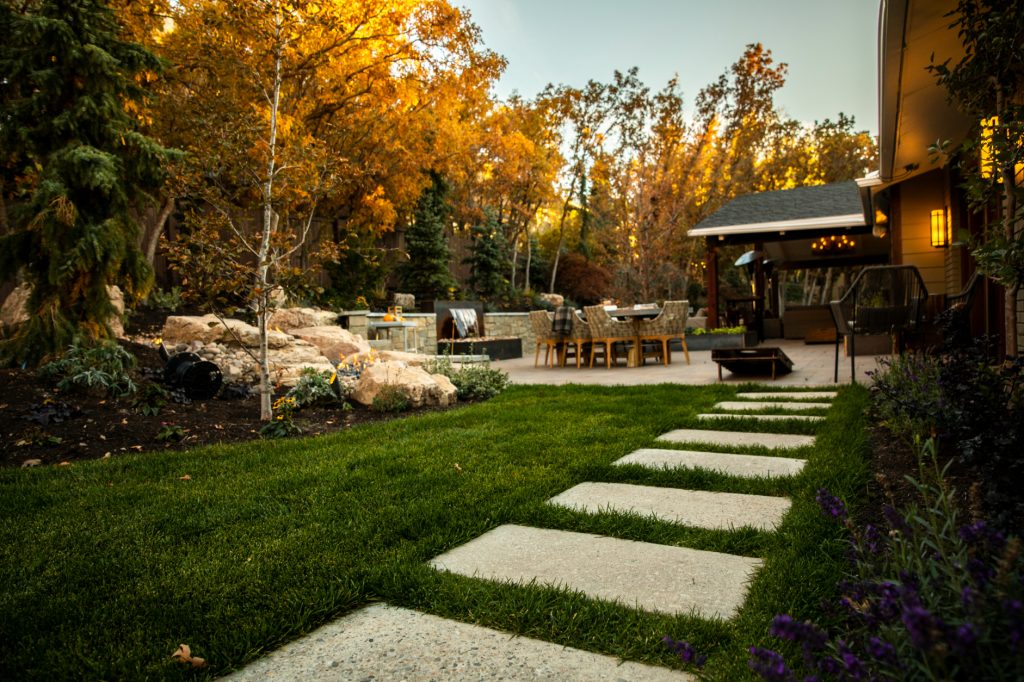Maybe you’re starting with a blank patch of dirt, or maybe you have a yard that is lackluster, or just not working for you. If you’re thinking about tackling a landscaping project in the near future, but aren’t sure where to start, we’ve got you covered. We’ll walk you through the basics of landscape planning, talk about some landscape planning mistakes and missteps you’ll want to avoid, and touch on when and how you should use DIY landscape planning tools.

Landscaping Planning 101
It’s not possible to teach you everything you need to know about landscape planning and design in a few short paragraphs, but it is possible to highlight a few of the things you need to know as you gather landscape planning ideas and information. Whether you plan to DIY your landscape or use a professional landscaping service, these tips will come in handy throughout your project.
Determine Your Landscaping Needs
It’s important to note that wants and needs are two different things. In the beginning of your landscape planning, you want to look at just your needs. How will you be using the space? Who will be using the space? What are the necessary features you MUST have to make it “liveable?” Make a list.
Get to Know Your Canvas
Before you plant a single thing or dig up one shovelful of dirt, you need to know what you’re working with. Take time to map out your yard. Take note of when and where the sun hits, where the wind blows, how your current irrigation system functions, if there are any areas that flood when it rains, and if there is anything that changes from season to season. Create a scale plan of your current landscape and note all of your findings on the plan. (Not sure what a scale plan is, or how to draw one? We can help. Give us a call.)
TRENDING: Your Utah Flooding Preparedness Checklist
Gather Inspiration
This is where it gets fun. Start looking at other yards and deciding what you like and don’t like. The Big Rock Landscaping portfolio has a variety of projects to use as inspiration. Magazines, blogs, Pinterest, and Google searches are also good sources for inspirational images. You may also want to take a walk through your neighborhood to see what others in your area have done. This can be especially helpful since they have likely accounted for the local climate in their design. Looking at what others have done can help you determine your own garden style if you’re not already sure what that is. Bonus points for gathering your inspiration in a way that allows you to easily share with your landscape team! Ideas include; a Pinterest board, a Google Doc, or even an old-school 3-ring binder full of photos.
Create a Wish List
With your landscaping needs outlined and the inspiration photos fresh in your mind, create a wish list of all the things you want in your dream backyard. Not all of these things will make it into your final landscape plan, but now is the time to dream big and map out your ideal scenario.
Make a Budget
This is the step where your wants and needs start duking it out to determine what will make it into your final landscape planning design. Create a budget based on what you can afford, and don’t forget to factor ongoing maintenance costs into the equation.
Start Planning
This is by far the most involved step of the process. Start drawing some designs on the scale map you made of your yard. Decide what the focal point of your yard will be and determine how everything will lead to and away from it. Create different “rooms” or areas and determine how you will connect them to each other. Insert your hardscapes like a walkway, pergola, playground, kitchen, bbq, pool, spa, patio, firepit, or stairs. Then consider what plants and trees you want and need—shade, fruit/food, privacy, beauty, aroma? Take into account what plants will survive in your climate, and their water and sunlight needs. Think about the growth rate and mature size of the plants and be sure to give them enough room to grow.
Start Small
After you’ve completed your plan, see how it lines up with your budget. Can you afford to do everything on your list? If not, start small. Choose one area to begin with, and complete the planning phase by phase as you can afford it. With your master plan in hand, you can be sure your landscape will be cohesive, even though you’re not finishing it all at once.
RELATED: 5 Ways Landscaping Saves Your From Flooding
This landscape planning phase is the most important part of your project. Putting in research and forethought at the beginning of the project will save you time and money in the end and it will help your project have a cohesive look to it, often being able to blend old and new elements seamlessly.

The 12 Biggest Landscape Planning Mistakes To Avoid
If you’re venturing into the world of DIY landscape planning, beware of these 12 common mistakes people make on their landscaping projects:
1. Not Planning
At some point, we’ve likely all had a parent, teacher, or coach who has told us, “If you fail to plan, you plan to fail.” This is just as relevant in the world of landscape planning design as it is in life. Haphazardly bringing home plants from the local nursery, or redoing areas of your yard on a whim won’t give you the backyard of your dreams. You don’t have to complete your whole yard all at once, but you should develop landscape design plans for the full space. Take into account seasons, water needs, space usage needs, and plant growth rates as you think through how you want your yard to look.
2. Not Accounting for Drainage
Water flows to the lowest spot, and if you don’t build up low areas of your yard or garden, you could end up with some swampland on your hands. Be aware of the low-lying areas of your yard and bring in the dirt to level them out.
LEARN MORE: Your Utah Flooding Preparedness Checklist
3. Planting too Deep
Did you know that planting a tree or plant too deep in the ground can choke and kill it? Take a cue from the temporary pot the plant comes in and dig a hole that is only slightly deeper than the depth of that soil.
4. Forgetting About Pets and Wildlife
If you have pets or live in an area where wildlife regularly vacations in your yard, you have to consider them as you do your landscape planning. If your pet uses the yard at all, you need to assume that they will make themselves comfortable exploring every inch of it. Some plants are harmful to pets and animals. Other plants can attract animals. And still, others are seemingly just fun for animals to destroy. Consider using pet-friendly plants in your plan.
5. Not Considering the View from the House
Sure, your yard might look good from outside, but what do you see when you look out your windows? Have you unintentionally placed things in your yard that obstruct the view from inside the house? Take some time as you do your landscape planning to consider things from an inside perspective as well as an outside one.
6. Choosing the Wrong Plants
Plants are finicky, so it’s important to get the right plants in the right places. Sometimes people pick plants because they like the way they look. But a big part of landscape planning is understanding what plants work in your climate, the seasonality of plants, their water and sunlight needs, and their growth rates. Oh yeah, and knowing which plants look good together too.
7. Planting in the Wrong Place
This one goes along with choosing the wrong plants. Putting them in places where they don’t get enough sunlight, get too much sunlight, don’t get enough water, get too much water, are crowded by other plants, or just don’t look good aesthetically, are all backyard landscape planning faux pas.
8. Not Considering the Mature size of Plants
Nowhere is the importance of landscape planning more evident than in an overgrown yard. When you plant your yard, you have to take into account that everything will grow and mature. In other words, it will all get bigger. If you don’t work that into your plan, you can end up with an overcrowded space that is the wrong scale and far from a zen retreat.
9. Poor Irrigation
It turns out that plants need water to survive. *wink* Sometimes people don’t provide enough irrigation or irrigation in the right places, and their hard work and money spent literally dries up and withers away.
10. Not Enough Variety
All the same plants, flowers, and trees can make for a boring yard. You should try to include a variety of shapes, sizes, textures, and colors to add visual interest.
11. No Cohesion
This problem stems from having too much variety and not enough thoughtful landscape planning. Stick with a few different varieties of plants and then repeat them throughout the yard to bring a unified feeling to the space.
12. No Budget
A landscaping project can go off the rails quickly, and the cost skyrocket when you don’t give yourself a budget. It’s nice to dream big, but you still need to understand the cost of that dream, and how it enhances the value of your house.
For years, the rule of thumb for determining your landscaping budget has been to spend around 10% of the value of your home, but this percentage has been trending upward recently as people shift from having a “yard” to dreaming of an “outdoor living space” and all of the things that come with it. Now your landscaping budget can include things like irrigation, sprinklers, pools, hardscaping, and structures like pergolas and patios. Now the average landscaping budget is starting at 20% of your home value. Of course, your budget can vary depending on the size of your lot and your vision.

What You Need To Know About Landscape Planning Apps
There’s an app for everything these days, so you’d better believe there are a lot of landscape planning apps out there. Doing some landscape planning online or on an app can be a fun way to experiment and get to know your yard. You can use them to create a map of your current landscaping and insert your greenery and hardscaping. Landscape planning tools like apps and other online resources can actually be a helpful way to keep tabs on your current landscape situation.
However, sometimes people forget that a landscape planning app doesn’t do the planning or landscaping for you. It’s a great tool, yes, but it still relies on your landscaping knowledge and design skill. Before you spend money on the premium features of an app, consider what you hope to accomplish with it. If you’re using it with the idea that it will help you get to know your yard better and make some planning decisions and minor improvements and modifications—great! It can certainly help with that. If you’re using it with the hope that it will help you design a space worthy of a landscaping award, you may want to check your expectations.
For major improvements, revamps, and remodels, you’ll really want to consider calling in a landscaping design expert. Your landscaping is an investment that can boost the property and resale value of your house. That’s why it’s best to enlist the help of professionals to make sure you’re spending your money wisely and on the things that will bring you the most enjoyment now, and the best resale value later.

Big Rock Landscaping For Your Landscaping Planning Projects
If you’re ready to talk to someone about landscape planning, give Big Rock Landscaping a call. We would love to get to know you and your project and talk through our landscape design process to see if we’re a good fit. Our award-winning landscaping firm is known for our customer service, innovative designs, and stunning finished products. Get in touch with us today to see how we can help you make the most of your landscape design.

